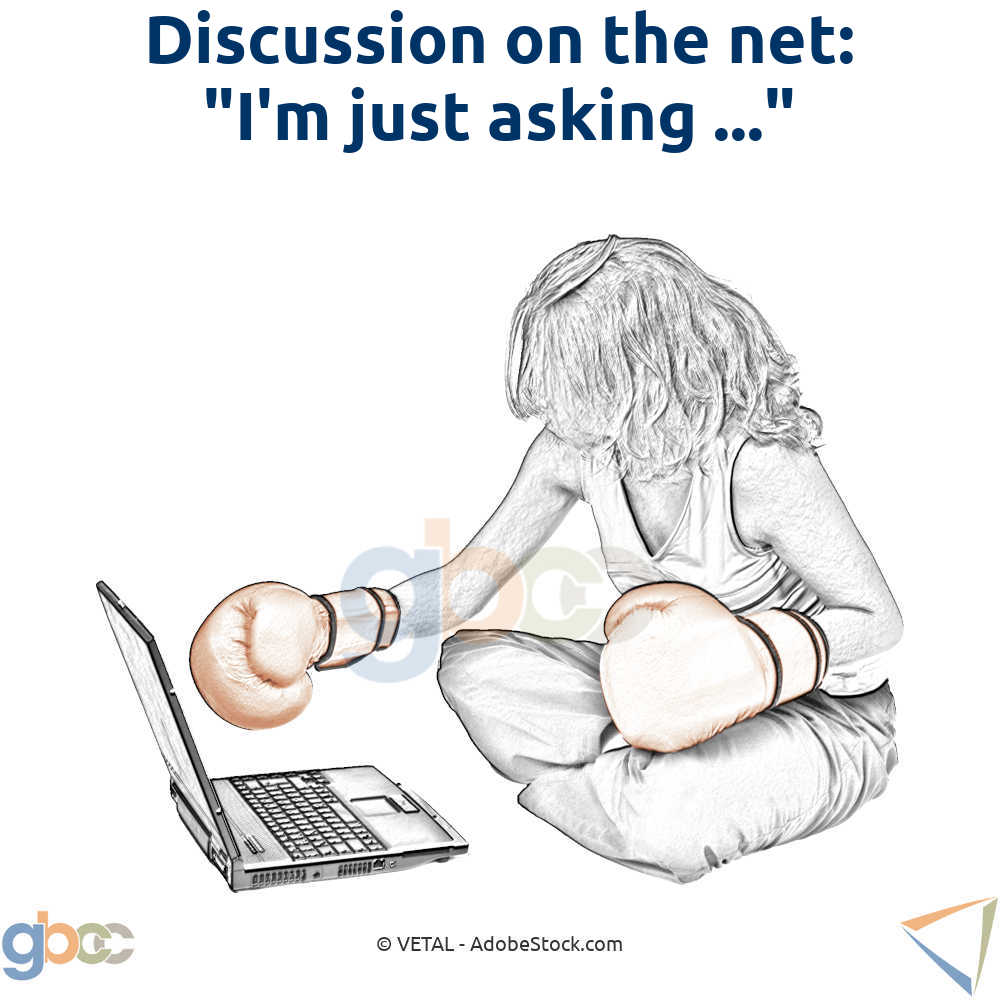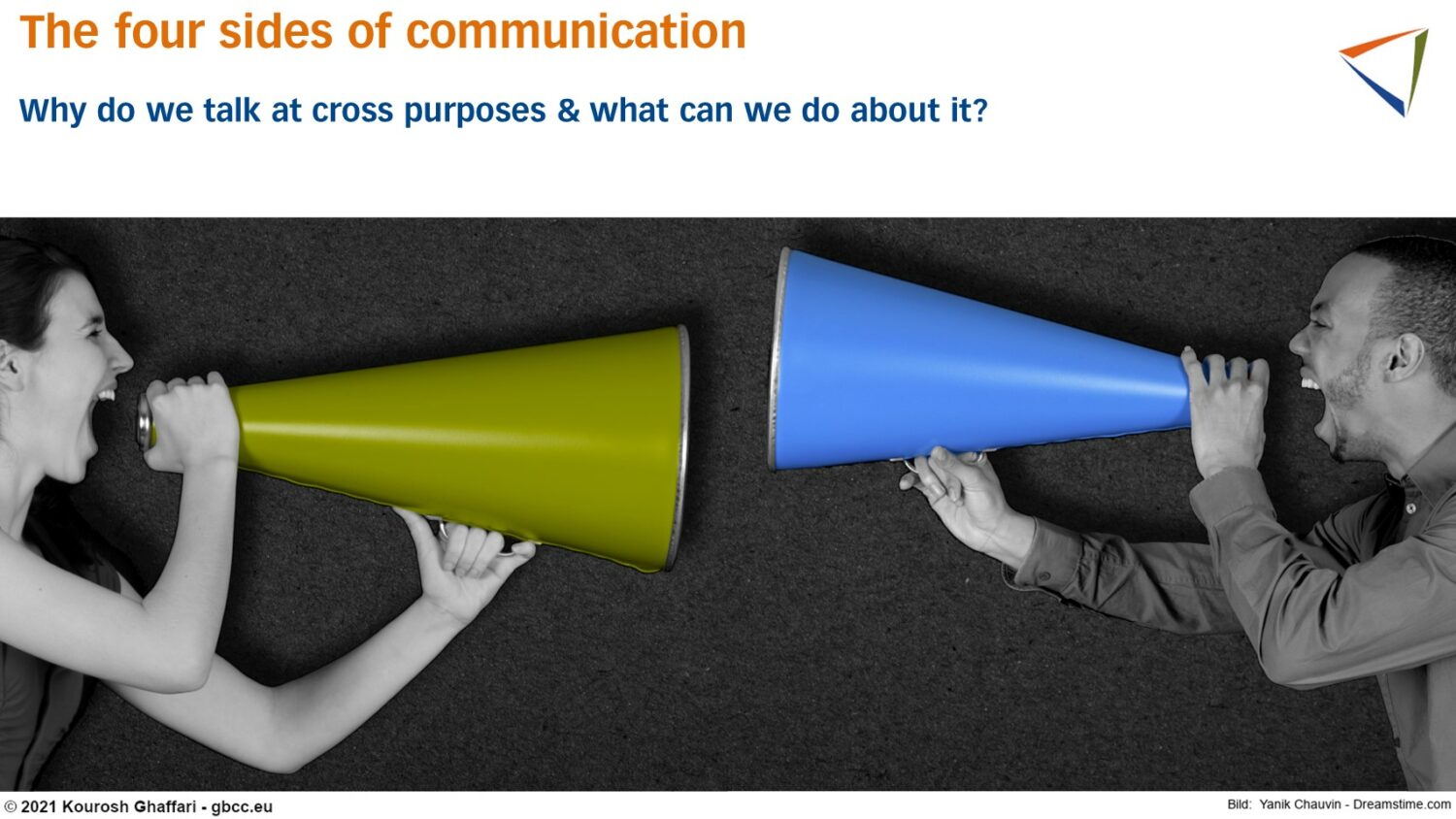Discussion on the net: Why do factually formulated questions or a friendly offered aid sometimes cause a violent and emotional backlash?
And what lessons can we learn from this for the company’s appearance on social media?
This post is not about the fringe group of internet trolls who use their anonymity to make a stink. It is about the interactions of the masses. People who can be identified with their real names and pictures. People who know how to articulate.
Nevertheless, something in communication seems to be striking at hidden issues in such a way that they leave the factual level during a discussion on the internet and switch to the personal level. At least that is the perception from the outside.
To find the answer we need to read between the lines.
At least since Schulz von Thun’s “The Square of Communication”, it has been well established that every communication also includes a statement about the relationship between a sender “S” and a receiver “R”. And this seems to be correlated with the inner attitude that S assumes.
The formulation of a question suggests a request. Is that the truth and is it really about a “request”?
“If I may ask…”. Many arguments begin with a harmless question. S expresses factually and politely that he is interested in gathering knowledge and that he wants to understand something better. His question is thus packaged as a polite request.
Let’s say, R responds evasively or asks a counter-question or tells something completely different. Then S replies: “You have not yet answered my question…”. R’s reaction is now sarcastic or ironic. Shortly afterwards you read from S: “I politely asked you a question. Why can’t you answer it objectively and get personal instead?” Apparently, the escalation is in full swing. What happened here?
The issue is that a supposed request is almost never really meant as a “request”. Because a request implies that one is expecting a favour or the like. A mindset that fits a request for a favour would be for example “openness”: When you get a favour, you are happy. And if not, then it is absolutely OK, because one cannot demand a favour.
However, S does just that: It is an expectation behind his question. He is disappointed and demands a response from R. It is not an open request. Questioner S therefore believes that he deserves an answer and R feels uncomfortable in the position assigned to him and reacts emotionally.
The questioner’s attitude implies a hierarchical gap
An expectation that R owes an answer to S is not wrong per se. It depends on the context of their relationship. There are certainly situations in which there is such a consensus between S and R. For example, when a customer asks a question to a salesperson or a boss to his employee. These situations have one thing in common: There is a chain of authority. S stands above R and can therefore adopt a demanding posture.
And that is the crux of the matter in this case: S’s attitude assumes a hierarchical gap and is therefore a personal affront to R.
Hence, it was not R that started to get “personal”, but S! S triggered the starting shot for communication on a personal level with his demanding attitude.
I just want to help…
A similar case of conflict arises in connection with the attitude “I want to help”. S wants to help and R reacts to it personally and emotionally. Why is this?
If S offers aid and advice unsolicited or proceeds directly to action, then S’s approach implies that:
- R needs help, and
- R cannot cope with it alone and would be lost without S.
Company appearances on social media
That being said, when it comes to company appearance on internet platforms, one should be aware of the problem of the relationship statement.
Let us assume that customer S complains, very annoyed and offensive, on the Facebook page of a company and complains about the poor quality of the goods or the services. Let us consider two possible reactions of company representative R:
- 1) R answers on a personal level: “Please don’t take that tone with me. Please calm down first and then submit your request again.”
- 2) R answers on a factual level: “This page is a free service from our company and is used for us sharing information on products and markets. Please contact the customer service department in charge of your product with your complaint. You can find the contact information on our homepage.”
Both reactions very likely lead to an escalation instead of a de-escalation: S has a hierarchical customer-seller-relationship in mind. From his perspective, he is very well entitled to make demands and ask R to explain himself. With this attitude, however, he meets an opposing attitude. I would like to clarify the resulting discrepancy with the help of these parables:
- Regarding 1) Child R organised a party without parental consent. His party guests left a mess. The angry parents call out R on it. R replies: “No, as long as you’re angry, I don’t want to answer. Ask me again when you have calmed down.”
- Regarding 2) Wife S had asked her husband R to do some urgent shopping because they were expecting guests. R forgot it. S confronts him in his study room. R replies: “This is my study room. Not here, not now! You disturb!”
Based on my daily observations, further training for employees who, as company representatives, may be affected by a discussion on the internet, is highly and urgently recommended. My tip for you: A good way to address emotionally difficult issues and still remain true to oneself and one’s needs is the method of “Nonviolent Communication” according to Marshall B. Rosenberg.
I-am-not-responsible attitude of the employees
I would like to take up the second case again, because – whether call centre or social media – it causes a lot of disputes with customers.
Companies invest a lot of time and money to establish the name of their company or their product or that of the owner as a brand. It should be known, recognised, and associated with properties.
Once this step has been taken, from the customer’s point of view every employee in a corporate group works for the brand and not for division X or subsidiary Y.
It is the divisional egoisms within the company that ensure an I-am-not-responsible attitude among employees. In my work with companies, overcoming territoriality therefore plays a central role.
One way to get there is to clarify the overarching common goals and the associated mutual role expectations between hierarchies and colleagues.


